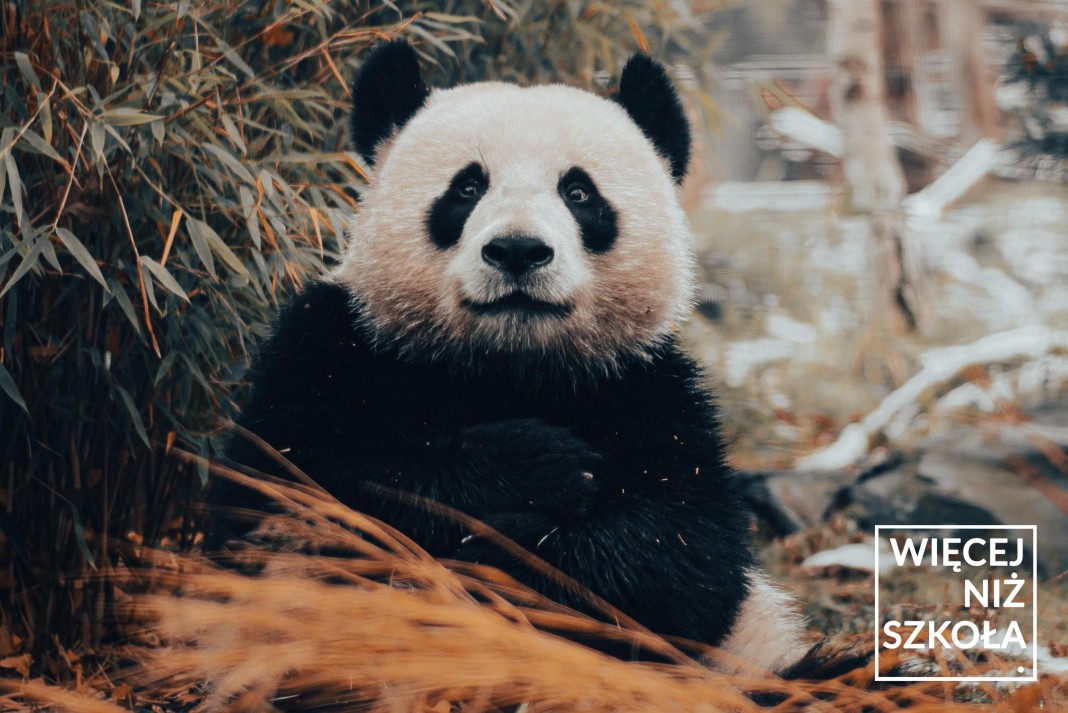Lato na horyzoncie! a wraz z jego przybyciem dostaniemy kolejny numer (64.) naszego czasopisma anglojęzycznego AimHigh. mamy dużo ciekawego materiału, wiec czeka nas sporo ciekawej lektury. Zanim poznamy całość periodyku, tradycyjnie przedstawimy kilka ciekawych artykułów napisanych przez naszych uczniów. Dzisiaj zachęcamy Was do przeczytania tekstu Oliwii Zielińskiej klasy 1c o pandzie wielkiej i o tym, dlaczego to piękne zwierzę jest zagrożone wyginięciem. Zapraszamy!
========================
Giant Panda – an endangered species?
The Giant Panda, called bamboo bear, is a species of predatory mammal from the bear family. Pandas are one of the most loved and popular animals. Their presence in zoos guarantees a huge number of visitors but their natural habitat is in the bamboo forests in China. I saw them in zoo in Toronto and I have been in love with them since then.
Pandas are known for their love of cuddling, eating and sleeping. Most bears usually eat plants, meat and fish but pandas only eat bamboo. They spend more than half a day eating, and they consume as much as 14 kg a day. They have round faces because chewing bamboo gives them big cheek muscles. As bamboo doesn’t give them lot of energy and they weigh about 150 kg so they are very sleepy and rest a lot. For young pandas to survive, they need to learn tree climbing early to defend themselves from threats, as their parents don’t play with them being too focused on eating and resting. Most pandas spend a lot of time alone. In the wild, pandas live for 15-20 years.
According to the International Union for Conservation of Nature, the giant panda is one of the animals most vulnerable to extinction, due to the gradual reduction of the areas available to it, but also due to low fertility.
One of the main causes of giant panda extinction is human activity. Since ancient times, people have considered its fur very valuable, due to the relatively small number of pandas. Nowadays, people destroy the natural environment of pandas by cutting down forests for farmland, which disrupts the movement and reproduction of animals. Poaching was also a big problem, the scale of which has decreased significantly due to legal protection.
Another reason for the disappearance of giant pandas is the massive death of bamboos over vast spaces. Bamboos, because their flowering is preceded by the death of the shoots. This situation occurs every 15–100 years. Such regular dieback of bamboo shoots has been a problem only since panda habitats were limited to the higher parts of the mountains and fragmented. In the past, it was enough for animals to move to another valley to find another species of bamboo, or one that has died out in the previous habitat and grows at a younger stage in the new one.
From the mid-twentieth century, Panda was a symbol of endangered species. In 1970 there were only 1,000 pandas left in the wild. Thanks to the joint work of the Chinese government, WWF and local communities, it was possible to stop the extinction of these beautiful animals. In 40 years, the population of pandas has increased by 80% to 1,860 individuals. Thanks to this, the International Union for Conservation of Nature changed the degree of extinction threat for the giant panda. Red List of Threatened Species status has been lowered from the category of „endangered” to vulnerable to extinction”.
Oliwia Zielińska (1c)
















